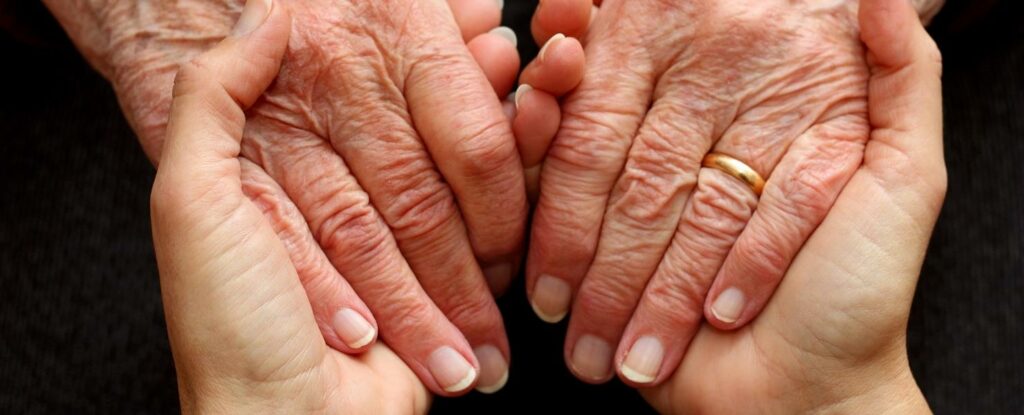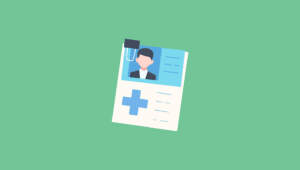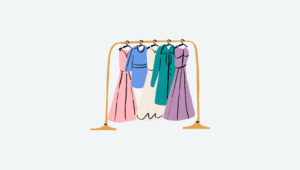Being a caregiver for a family member can be a rewarding experience despite the many challenges that may sometimes leave you feeling overwhelmed. One of the most common challenges to caregiving is the financial burden it can cause which is what leads many of us to wonder how we can get paid as a caregiver for a family member.
According to a 2020 report by AARP, around 48 million Americans provide care to an adult family member without receiving any pay. Many of them do so for an average of around 24 hours each week.
Caring for an adult family member can be an expensive commitment that can become a struggle, particularly if it is affecting your ability to continue to work. However, in some circumstances, you can get paid to be a family caregiver. Typically, your chances of getting paid are best if you are caring for someone who is a U.S. Veteran or someone who is eligible for Medicaid, but there are a few other possibilities.
Getting Paid to Care for a Veteran

The VA offers Veteran Directed Care (VDC). This is for veterans of all ages who are enrolled in a VA medical benefits package. VDC provides an individualized budget for Veterans who need assistance with daily living activities, such as grooming, bathing, dressing, meal preparation, medication management, and transport to medical appointments.
VDC is a flexible monthly budget and Veterans can choose how they spend it. For example, it can be used to pay for an in-home caregiver or for assistive aids to help with independence. It can be used to pay a relative including, spouses, adult children, and grandchildren to provide care.
The VA Health Administration has set a national hourly rate of pay for caregivers, which is adjusted at a local level. Veterans who are eligible for VDC liaise with a VA financial management service. VDC is not currently available in every state. You can find out more about the program, and if it is available in your state here.
Aid & Attendance Pension Benefit
Aid & Attendance (A&A) pension is a monetary benefit for Veterans and surviving spouses who require assisted living, nursing home care, or long-term in-home care. A&A provides Veterans and surviving spouses with a monthly cash allowance. For example, a single Veteran with no dependents may qualify for up to $2,050 each month, while a married Veteran or one with a dependent may qualify for up to $2,431 each month. These funds can be used to pay an adult family member for in-home caregiving services.
Eligibility for Aid & Attendance Pension Benefit
The A&A pension is an add-on benefit to the basic Veteran pension or the survivor Veteran pension. To qualify for A&A a Veteran must at least be eligible for the basic Veteran pension and meet a disability requirement.
Basic Veterans Pension Requirements
Eligible Veterans must meet at least one of the following requirements:
- The Veteran must be 65 years or older with no or limited income
- The Veteran must have a permanent disability
- The Veteran must be receiving Social Security Disability Insurance
- The Veteran must be receiving Supplemental Security Income
- The Veteran must be living in a nursing home
Disability Requirements for A&A
Eligible Veterans must meet at least one of the following requirements:
- The Veteran must be bedridden except during treatments or medical and therapy appointments
- The Veteran must be living in a nursing home due to physical or mental impairment
- The Veteran must have a severe visual impairment
- The Veteran must need assistance with daily living such as bathing, grooming, using the bathroom, etc.
Financial Requirements for A&A
The VA has set an upper limit for eligible Veteran’s net worth of $123,600. This does not include the value of the applicant’s personal effects, residence, or automobile. The VA also implements a three-year review to assess whether any assets were sold below market value or gifted within the past three years to deliberately reduce the applicant’s net worth.
There is also an upper threshold on the applicant’s monthly countable income. This includes Social Security benefits, retirement and investment payments, and income received by dependents minus out-of-pocket medical expenses and health insurance premiums. The amount of A&A that a Veteran will receive makes up the difference between their countable income and the monthly upper limit. You can find out more about eligibility requirements and the application process for A&A here.
Housebound Pension Benefit
Housebound Pension (HBP) is a monthly cash benefit for eligible Veterans and surviving spouses who have a permanent disability for which they require in-home assistance. HBO can be used to pay caregivers who are relatives, such as adult children, and grandchildren. Payments for caregivers can be deducted from the Veteran’s countable income when the pension amount is calculated. Like A&A benefit, HBP is an add-on to basic Veteran’s pension or survivor Veteran’s pension.
At this time, the maximum monthly benefit is $1,502 each month for a single Veteran without dependents and $1,502 each month for a married Veteran. For a Veteran with a dependent child, the maximum monthly benefit is $1,882 each month. You can find out more about eligibility requirements and the application process for HDP here.
Program of Comprehensive Assistance for Family Caregivers
The Program of Comprehensive Assistance for Family Caregivers (PCAFC) provides monthly cash benefits to caregivers of Veterans who are also family members. PCAFC is for Veterans who meet the following criteria:
- The Veteran must have a serious illness or injury that has a service-connected disability rating of 70% or higher
- The Veteran must have a serious illness or injury that was aggravated or incurred in the line of duty on or before May 7, 1975, or on or after September 11, 2001.
- The Veteran must need in-home assistance for at least six continuous months to help with at least one activity of daily living such as bathing, grooming, or meal preparation, etc.
- Personal caregiving services will be provided by an adult family member.
You can find more information about PCAFC and how to apply here.
How to Apply for Caregiver Benefits from the VA
If you think the person you are caring for may be eligible for any of the above benefits, you should consult a VA Pension Planner before you apply. A Pension Planner will advise you on your eligibility for VA benefits. He or she will also help you with your application, which can be tricky, and make sure you have all the necessary supporting documents in order to get paid as a caregiver to your family member. You can find a VA Pension Planner in your area here.
Getting Paid to Care for Someone on Medicaid

In some states, there are programs to help people who are caring for a family member who is in receipt of Medicaid or Medicaid state plans. The names of Medicaid plans sometimes vary from state to state.
For example, in California is it Medi-Cal, and In Washington, it is Apple Health. Whichever the Medicaid plan, anyone who meets the eligibility criteria can receive benefits and services from their state’s Medicaid program.
In some states, Medicaid personal care services are available, and these often allow participants to choose their own care, which can include hiring a family member as a caregiver. Depending on the state in which you live, there are multiple options for long-term in-home assistance under a Medicaid plan. These include the Self-directed Personal Assistance Services (PAS) State Plan Option, the Home and Community-Based Services (HCBS) State Plan Option, and the Community First Choice Option (CFCO).
Self-Directed Personal Assistance Services (PAS) State Plan Option
The Self-Directed PAS State Plan allows eligible participants to select and manage a personal caregiver, which can be an adult family member. Based on their budget, they can choose the pay rate for their caregiver.
Unlike the other two self-directed programs, participants of this program work with financial mediators to handle the financial aspects of hiring caregivers, such as paying taxes.
This is not a stand-alone program but an add-on option that Medicaid beneficiaries can utilize, providing participants a customized budget based on their needs. The program not only allows the participating state to give cash to eligible applicants but also for home and community-based services. The state also determines which relatives may be hired as a caregiver. For example, adult children or grandchildren, and spouses.
Home and Community Based Services State Plan Option
The Home and Community Based Services State Plan Option (HCBS) allows states to offer home and community-based services as a part of their state Medicaid plan. Unlike when qualifying for HCBS Medicaid Waivers, applicants do not need to require a level of care such as that provided in a professional nursing home facility. With an HCBS State Plan Option, your family member can create a customized personal care plan. Their need for in-home personal care services and their budget will be taken into account. This program allows participants to hire relatives to provide their personal care.
Community First Choice (CFC) Option
The Community First Choice (CFC) Option provides Medicaid participants who need a nursing home level of care to receive personal in-home services. Eligible applicants can choose from either agency-provided care or self-directed care. This means that if your family member chooses this option, they can hire you to provide them with their required daily personal assistance with daily activities. Required daily activities include bathing, using the bathroom, grooming, preparing meals, dressing, and light housework. The CFC option is currently not available in every state. You can find more information about the CFC option here.
Home and Community Based Services Waivers
Home and Community Based Services (HCBS) provides Medicaid recipients with certain waivers. These include called HCBS Medicaid Waivers, and Demonstration Waivers, (sometimes called Research and Demonstration Waivers). Although not every state offers HCBS waivers, most of them do. Just like the names of various state-to-state Medicaid names, the names of HCBS waivers also vary. For example, in Indiana, the waiver is called the Aged and Disabled Medicaid Waiver, and in Iowa, it is called the HCBS Elderly Waiver.
Neither HCBS Medicaid Waivers nor Demonstration Waivers are based on entitlement. This means that there are threshold limits on the number of participants that can be accepted at any one time and there may be a waiting list.
If your relative is accepted for a waiver, they will be able, in most cases, to opt for participant direction, which means they will be able to hire you for their personal in-home assistance. Waivers can also be used for other services including:
- Adult daycare
- Case management
- Homemaker services
- Home health aids
- Respite care
- Personal emergency response systems
If you are caring for a relative, you may benefit from adult day care or respite care if you need to take a well-earned, short-term break from caregiving.
Adult Foster Care
Sometimes called adult family care, or adult family living, adult foster care is an option in some states for Medicaid recipients. This allows a senior individual to move into their caregiver’s home. Although the benefit does not provide money for the room and board of the fostered adult, it does provide financial assistance for help with personal daily activities such as bathing, using the bathroom, eating, preparing meals, transportation, and 24-hour supervision.
This option allows you to provide a foster care home for an elderly loved one. Although this is not a viable option for a spouse, it is commonly used when an elderly parent moves into the home of an adult child. This option is not currently available in many states. You can find out more about this program here.
Caretaker Child Exception
Although this is technically not a Medicaid program, it is a Medicaid exemption. As such, it permits an adult child to be paid for providing in-home care assistance for an elderly parent. Payment for caregiving, in this case, is not in the form of a cash benefit. Rather it allows the parent’s home to be transferred to the caregiver as a form of payment. To be eligible, you must have lived with your aging parent for at least two years before they are placed in a nursing home. You must also have provided a level of care that delayed the need for your parent to be placed into a care facility. It is advisable to consult a Medicaid planner if you are considering this option, so ensure that you meet all the requirements, including Medicaid’s five-year Look-Back Policy.
Medicaid Eligibility Explained
Eligibility for Medicaid programs that pay for personal caregivers depends upon the applicant’s income and assets as well as their medical and functional status. You should be aware that Medicaid eligibility requirements are not uniform from state to state. Neither are these requirements always consistent within an individual state.
The HCBS Medicaid Waiver eligibility criteria are less restrictive than are those for a state Medicaid plan. Currently, the upper threshold for senior HCBS Waiver applicants is limited to $2,382 per month in income and $2,000 in assets. State Medicaid applicants are typically limited to $794 per month for a single applicant and $1,073 per month for a couple in income and $2,000 in assets.
It is important to bear in mind that in some states, programs require that senior applicants need a nursing home level of care, while others require that applicants need only assistance with daily living activities such as dressing, bathing, meal preparation, and using the bathroom. Needless to say, understanding how to get paid as a caregiver to a family member can be confusing. You can find out more about Medicaid eligibility here.
How to Apply for Enrollment
Regardless of which Medicaid program your family member has decided to apply for to compensate you for caregiving, the initial steps for application are to make sure your relative meets their state’s eligibility requirements. You can find out more information about this here.
Due to the rigid financial restrictions on income and assets for Medicaid, many individuals will not be eligible for the program. However, even if your loved one is not immediately eligible for Medicaid, this does not mean that they cannot become Medicaid-eligible. To ensure their eligibility, many applicants choose to work with a professional Medicaid Pension Planner. In addition to helping your relative rill out the Medicaid paperwork, planners are also very familiar with the nuances of eligibility and they may be able to help you and your family restructure your finances accordingly.
If Medicaid has determined that your relative does meet the financial eligibility for Medicaid, you are ready to contact your state’s Medicaid office to begin the application process. The application process varies slightly depending on the state and the Medicaid program. You can find out more about state-specific Medicaid programs here. Bear in mind that not all Medicaid programs allow elderly applicants to self-direct their care.
Other Options to Get Paid as a Caregiver

There are a few other available options to get paid as a caregiver to a family member that may be helpful if your older relative is unable to claim any of the previous benefits. Not all these options are available in every state.
Special State Programs
Some states offer programs that pay family caregivers for taking care of senior relatives who are not eligible for Medicaid but have certain medical conditions such as traumatic brain injury. To find out if your state offers any programs like this, a good place to start is your local Area Agency on Aging. They should be able to point you in the right direction.
Long-term Care Insurance Policies
It’s worth checking to see if your loved one is enrolled in a long-term care insurance policy. In some cases, they also include provisions for paying a family member for providing personal care, helping you get paid as a caregiver. If your loved one has such a policy, but you are not sure if it includes such a provision, contact the insurance company or agent to inquire about the caregiver payment benefit.
Company Paid Leave for Caregivers
These days, more and more companies are realizing that their employees may need to take time away from work to take care of an elder family member. This is why many businesses are offering paid leave for caregivers. For example, Intel allows employers 8-16 weeks of paid leave for caregiving employees. If you are taking time off work to take care of an elderly relative, find out if your company offers such benefits.
Getting Paid as a Caregiver Through Tax Credits and Reimbursements
You may be surprised to know that, in some cases, you can claim tax credits and reimbursements as a caregiver to a relative. While this isn’t exactly the same as getting paid as a caregiver, it can make a big difference. They can help a lot with day-to-day expenses even if you are not eligible to apply for benefits.
Providing that your elderly relative’s gross annual income is no more than $4,300 ( Social Security payments are not counted), and you are paying for more than 50% of the cost of their support, you can claim then as a dependent. Even if you fail to meet these criteria, you may still be able to deduct a percentage of care expenses such as:
- Premiums for Medicare Part B and Part D
- Supplemental health insurance
- Insulin and other prescription drugs
- Dental treatments such as X-rays, fillings, and oral surgery
- Professional nursing services
- Long-term care, such as rent or mortgage, food, and other care costs
- Mobility improvement in the home
- In-home medical equipment or devices
- In-patient procedures such as surgeries
- Transportation to medical appointments
Although tax credits do not offer a direct way of getting paid for your family caregiving services, they can make a difference by significantly lowering your tax bill or perhaps even result in a substantial income tax refund. It’s worth bearing in mind that some state-funded benefit programs do not allow family members who claim loved ones as dependents to claim compensation. If you’re uncertain about where you and your family stand on this point, it’s probably best to consult an accountant or an advocacy agency to find out more about your situation and your and your loved one’s entitlement.
The Bottom Line

If you are considering taking on the role of a caregiver for a parent or other older relative, think about the future and how you may be able to get paid as a caregiver. If you are going to be caregiving for several months, though challenging, this can be manageable. However, if you are going o be taking on the role of caregiver for several years, this may present financial challenges that require preplanning.
Although financial supplemental income for caregiving can help out considerably, remember that there are other available solutions that can help to ease the financial burden. For example, Meals on Wheels, or the Supplemental Nutrition Assistance Program (SNAP). The National Council on Aging provides an online Benefits Checkup service that you can use to access more than 2,500 benefit programs throughout the U.S. to find ones in your area.
The Family Caregiver Alliance is also a great resource for caregivers. It offers a wealth of links to state-by-state services that fall within the following categories:
- Caregiver Compensation
- Disease-Specific Organizations
- General Information Assistance
- Government Health Disability Programs
- Legal Help Advocacy
- Resources on Living Arrangements for Care
- Services for Care recipients Living at Home
- Service Policies for Family Caregivers
You can reach out at any time for help and support for caregivers here and for help and support for Veteran caregivers here. Or, if you have any specific questions that you need help with, feel free to use our “Ask an Expert” form to reach out to our team of in-house caregiving experts and panel of advisors.








One thought on “How to Get Paid as a Caregiver for a Family Member”
Great information, thanks for sharing. Some programs I was aware of, many I was not. I have many new options to explore.